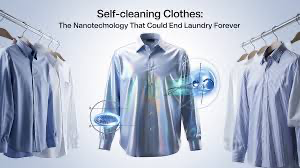Fashion Reimagined: The Rise of Self-Cleaning & Sustainable Clothing
In a world increasingly conscious of sustainability, the concept of self-cleaning clothing is no longer science fiction—it’s the fashion revolution of 2025. Pioneers like Pangaia and Nanoloom are leading the charge, leveraging graphene and cutting-edge nanotechnology to produce garments that repel stains, eliminate odors, and dramatically reduce washing frequency by up to 70%.
The environmental impact is staggering. According to UN reports, the global fashion industry consumes 79 billion cubic meters of water every year. By adopting self-cleaning fabrics, not only can households save gallons of water per wash, but chemical detergents and energy usage are also significantly reduced. This innovation aligns seamlessly with the circular fashion economy, where clothing is designed to last longer, be reused, and leave minimal ecological footprints.
Consumers, particularly in Europe and Japan, are already embracing these next-generation garments, attracted by both their eco-friendly credentials and unmatched convenience. Market analysts predict that sustainable clothing innovations will see a 24% CAGR through 2030, signaling that this is more than a passing trend—it’s a structural shift redefining how fashion interacts with the planet.From casual wear to high-performance sports apparel, self-cleaning fabrics are merging science and style, proving that eco-conscious choices don’t mean compromising on quality or aesthetics. As technology and sustainability converge, 2025 is shaping up to be the year fashion truly becomes smart, responsible, and future-ready.





